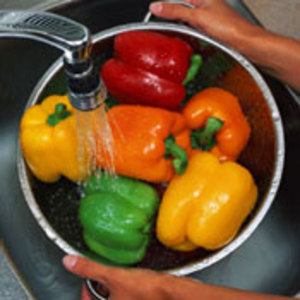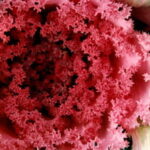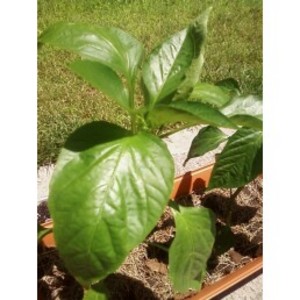Have you looked at the prices of peppers in the grocery stores? If you’re lucky, you may find them for $1 each. That is a lot of money for one sweet pepper.
There are many varieties of sweet peppers that you can grow in your garden, such as bell peppers, non-bell peppers, paprika, miniature peppers, giant sweet peppers, cherry, pimento, roasting, and ornamental peppers. They also come in a variety of colors such as green, yellow, red, chocolate, and orange.
Peppers are an easy vegetable to grow in your garden. You can do so many things with them. They are delicious fresh from the garden, used in recipes, baked, and stuffed. You can use peppers in canning recipes or place the entire pepper into the freezer.
You can buy the plants already growing at the nursery, or you can start the plants from seed.
Starting from Seed
If starting your own seeds, begin sowing them 8 weeks before the last expected frost date in your area.
Prepare the Pots
Fill cell packs or peat pots with potting soil. The soil should be level with the top of the cell packs or peat pots. It will settle down as the soil is watered.
Place one seed per cell or in each peat pot. With your finger, push the seed so it is about a 1/4 inch below the soil. Cover the hole with soil.
Water the soil thoroughly, making sure there are no dry spots. The seeds germinate best in an area that remains around 75 degrees Fahrenheit. Use a heat mat if you have one, or place the pots on top of the refrigerator. Cover the pots with a sheet of clear plastic. This helps the soil to remain moisture and retain humidity.
Check the soil every day for moisture. Keep the soil evenly moist, but not soggy. Seeds can take 21 days to germinate.
Prepare the Garden
The planting location should have full sun exposure.
Till or dig the garden site to a depth of 8 inches. Amend the soil with organic compost. If possible, add some manure to the soil.
One of the main factors when planting peppers is the outdoor temperatures. Wait until all danger of frost is past before setting the pepper plants outdoors. The outdoor soil temperature needs to be 65 degrees Fahrenheit or higher. You can help the soil temperature to increase by laying black plastic over the soil. For better success, lay the plastic down four weeks before the peppers actually go into the garden.
Harden the Pepper Plants
One week before planting the peppers in the garden, set them outdoors. By now, the pepper plants should be 4 to 6 inches tall. Find a place outdoors that offers wind and sun protection. Leave the pepper plants outside for an hour. Increase the outdoor exposure time over the course of the week, by doubling the time each day.
Plant the Pepper Plants
Dig holes in the soil, keeping the depth the same as the roots of the pepper plants. Carefully remove the pepper plants from the cell packs so you don’t break the soil around the rootball. If you used peat pots, cut or tear the top of the peat pot away so it falls below the soil line. If you leave the peat pot exposed above ground, it will act as a wick, removing the moisture from the rootball into the air. Keep the planting depth of the rootball the same as it was growing in the cell pack or peat pot. If you plant it deeper, the stem will rot.
Space the planting holes 18 to 24 inches apart, in rows 24 to 36 inches apart. Unless the variety you’re growing states otherwise.
Keep Weeds Away
Keep the garden area weeded. You don’t want the weeds to take the nutrients and moisture from the soil that the pepper plants need to grow.
Water
Water the peppers keeping the soil moist, but not soggy. If the soil dries out, the flowers may drop.
Fertilize
According to the University of Illinois, apply supplemental fertilizer after the first flush of peppers is set.
If the leaves are light green, apply a tablespoon of nitrate fertilizer, but if your plants are growing vigorously, do not apply nitrates or you will get a pepper plant of leaves, and no fruit.
Harvesting
Sweet peppers mature in 60 to 98 days, depending on the variety grown. Check the seed packet or planting label that came with your pepper plants.
Harvest the peppers when the fruit is mature. The peppers will feel firm and the stem will break easily off the plant. Always cut the peppers off the plant instead of pulling them off to avoid injuring the plant.
You can leave the peppers on longer, until they change color. Peppers that are left on longer, will be more healthy for you to eat and will have developed their full flavor. Red peppers are rich in vitamin A, and minerals that your body needs to stay healthy and strong.
Sources:
University of Illinois: Peppers
Vegetable Gardener: How to Grow Bell Peppers
“The Garden Primer”; Barbara Damrosch; 2008





